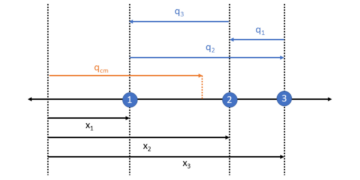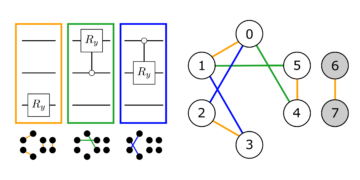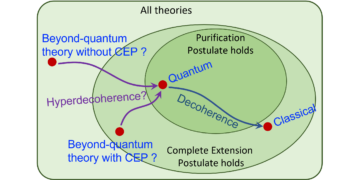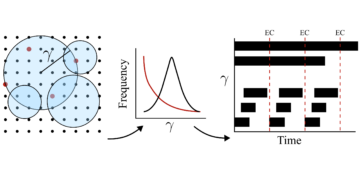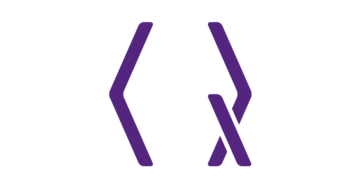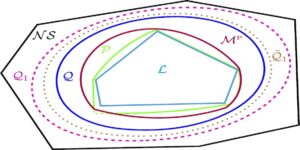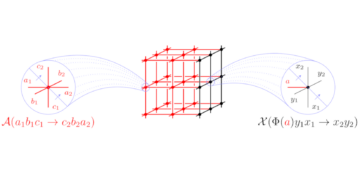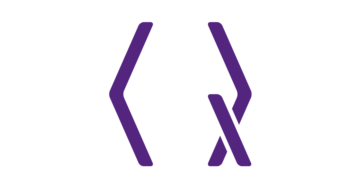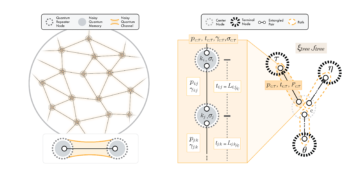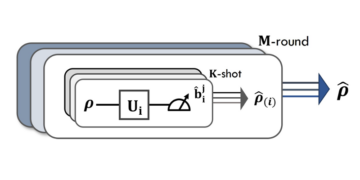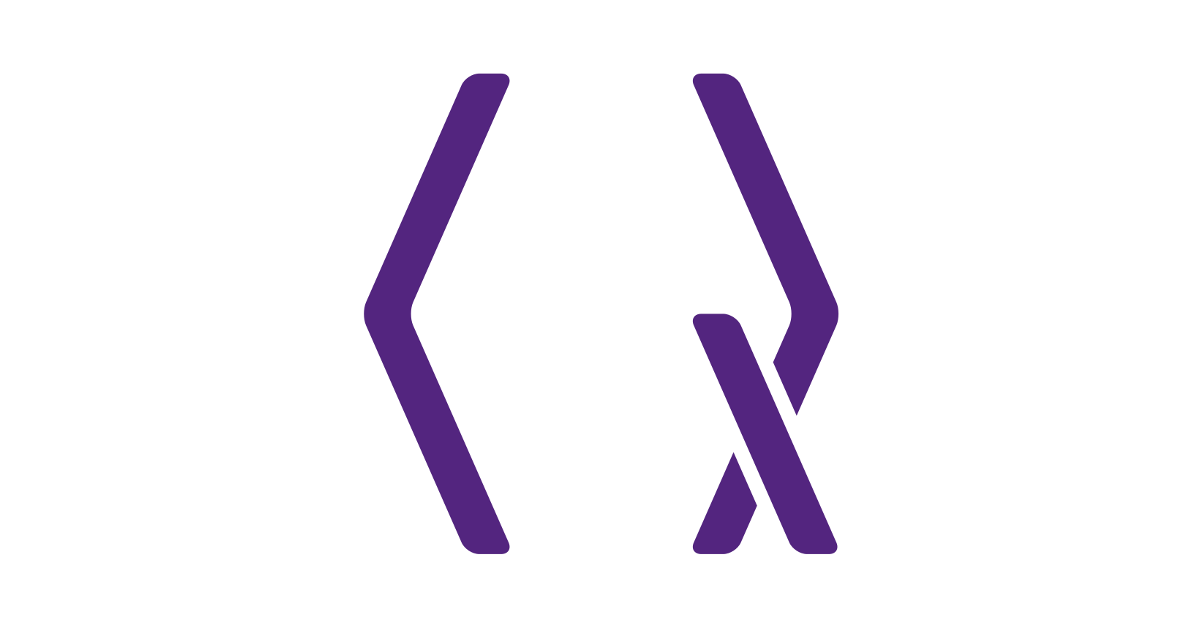
1Department of ECE and Institute for Systems Research, University of Maryland, College Park, MD 20742
2Department of Mathematics, The George Washington University, Washington, DC 20052
Find this paper interesting or want to discuss? Scite or leave a comment on SciRate.
Abstract
We construct a new family of permutationally invariant codes that correct $t$ Pauli errors for any $tge 1$. We also show that codes in the new family correct quantum deletion errors as well as spontaneous decay errors. Our construction contains some of the previously known permutationally invariant quantum codes as particular cases, which also admit transversal gates. In many cases, the codes in the new family are shorter than the best previously known explicit permutationally invariant codes for Pauli errors and deletions. Furthermore, our new code family includes a new $((4,2,2))$ optimal single-deletion-correcting code. As a separate result, we generalize the conditions for permutationally invariant codes to correct $t$ Pauli errors from the previously known results for $t=1$ to any number of errors. For small $t$, these conditions can be used to construct new examples of codes by computer.
► BibTeX data
► References
[1] J. Berthomieu, C. Eder, and M. Safey El Din. msolve: A library for solving polynomial systems. In 2021 Int. Sympos. Symb. and Alg. Comput., Saint Petersburg, Russia, 2021. doi:10.1145/3452143.3465545.
https://doi.org/10.1145/3452143.3465545
[2] S. Blundell. Magnetism in Condensed Matter. Oxford University Press, 2001.
[3] N. P. Breuckmann and S. Burton. Fold-transversal Clifford gates for quantum codes. arXiv:2202.06647. doi:10.48550/ARXIV.2202.06647.
https://doi.org/10.48550/ARXIV.2202.06647
arXiv:2202.06647
[4] M. Cheraghchi and J. Ribeiro. An overview of capacity results for synchronization channels. IEEE Trans. Inf. Theory, 67(6):3207–3232, 2020. doi:10.1109/TIT.2020.2997329.
https://doi.org/10.1109/TIT.2020.2997329
[5] I. L. Chuang, D. W. Leung, and Y. Yamamoto. Bosonic quantum codes for amplitude damping. Phys. Rev. A, 56:1114–1125, 1997. doi:10.1103/PhysRevA.56.1114.
https://doi.org/10.1103/PhysRevA.56.1114
[6] R. H. Dicke. Coherence in spontaneous radiation processes. Phys. Rev., 93:99–110, 1954. doi:10.1103/PhysRev.93.99.
https://doi.org/10.1103/PhysRev.93.99
[7] P. Flajolet and R. Sedgewick. Analytic Combinatorics. Cambridge University Press, 2009.
[8] J. A. Gross. Designing codes around interactions: The case of a spin. Phys. Rev. Lett., 127:010504, 2021. doi:10.1103/PhysRevLett.127.010504.
https://doi.org/10.1103/PhysRevLett.127.010504
[9] B. Haeupler and A. Shahrasbi. Synchronization strings and codes for insertions and deletions–A survey. IEEE Trans. Inf. Theory, 67(6):3190–3206, 2021. doi:10.1109/TIT.2021.3056317.
https://doi.org/10.1109/TIT.2021.3056317
[10] M. Hagiwara and A. Nakayama. A four-qubits code that is a quantum deletion error-correcting code with the optimal length. In 2020 IEEE International Symposium on Information Theory (ISIT), pages 1870–1874, 2020. doi:10.1109/ISIT44484.2020.9174339.
https://doi.org/10.1109/ISIT44484.2020.9174339
[11] D. B. Hume, C. W. Chou, T. Rosenband, and D. J. Wineland. Preparation of Dicke states in an ion chain. Phys. Rev. A, 80:052302, 2009. doi:10.1103/PhysRevA.80.052302.
https://doi.org/10.1103/PhysRevA.80.052302
[12] E. Knill and R. Laflamme. A theory of quantum error-correcting codes. Phys. Rev. A, 55:900–911, 1997. doi:10.1103/PhysRevA.55.900.
https://doi.org/10.1103/PhysRevA.55.900
[13] E. Kubischta and I. Teixeira. A family of quantum codes with exotic transversal gates, 2023. arXiv:2305.07023.
https://doi.org/10.1103/PhysRevLett.131.240601
arXiv:2305.07023
[14] E. Kubischta and I. Teixeira. The not-so-secret fourth parameter of quantum codes, 2023. arXiv:2310.17652.
arXiv:2310.17652
[15] V. Levenshtein. Binary codes capable of correcting deletions, insertions, and reversals. Soviet Physics Doklady, 10(8):707–710, 1966.
[16] J. E. Moussa. Transversal Clifford gates on folded surface codes. Phys. Rev. A, 94:042316, 2016. doi:10.1103/PhysRevA.94.042316.
https://doi.org/10.1103/PhysRevA.94.042316
[17] C. S. Mukherjee, S. Maitra, V. Gaurav, and D. Roy. On actual preparation of Dicke state on a quantum computer, 2020. arXiv:2007.01681.
arXiv:2007.01681
[18] A. Nakayama and M. Hagiwara. The first quantum error-correcting code for single deletion errors. IEICE Communications Express, 9(4):100–104, 2020. doi:10.1587/comex.2019XBL0154.
https://doi.org/10.1587/comex.2019XBL0154
[19] A. Nakayama and M. Hagiwara. Single quantum deletion error-correcting codes. In 2020 International Symposium on Information Theory and Its Applications (ISITA), pages 329–333, 2020.
[20] M. A. Nielsen and I. L. Chuang. Quantum Computation and Quantum Information. Cambridge University Press, 2010. doi:10.1017/CBO9780511976667.
https://doi.org/10.1017/CBO9780511976667
[21] Y. Ouyang. Permutation-invariant quantum codes. Phys. Rev. A, 90:062317, 2014. doi:10.1103/PhysRevA.90.062317.
https://doi.org/10.1103/PhysRevA.90.062317
[22] Y. Ouyang. Permutation-invariant quantum coding for quantum deletion channels. In 2021 IEEE International Symposium on Information Theory (ISIT), pages 1499–1503, 2021. doi:10.1109/ISIT45174.2021.9518078.
https://doi.org/10.1109/ISIT45174.2021.9518078
[23] Y. Ouyang. Quantum storage in quantum ferromagnets. Phys. Rev. B, 103:144417, 2021. doi:10.1103/PhysRevB.103.144417.
https://doi.org/10.1103/PhysRevB.103.144417
[24] Y. Ouyang and G. K. Brennen. Quantum error correction on symmetric quantum sensors, 2022. arXiv:2212.06285.
arXiv:2212.06285
[25] Y. Ouyang and R. Chao. Permutation-invariant constant-excitation quantum codes for amplitude damping. IEEE Trans. Inf. Theory, 66(5):2921–2933, 2020. doi:10.1109/TIT.2019.2956142.
https://doi.org/10.1109/TIT.2019.2956142
[26] Y. Ouyang and W. H. Ng. Truncated quantum channel representations for coupled harmonic oscillators. Journal of Physics A: Mathematical and Theoretical, 46(20):205301, 2013. doi:10.1088/1751-8113/46/20/205301.
https://doi.org/10.1088/1751-8113/46/20/205301
[27] O. Parzanchevski and P. Sarnak. Super-golden-gates for PU$(2)$. Advances in Mathematics, 327:869–901, 2018. doi:https://doi.org/10.1016/j.aim.2017.06.022.
https://doi.org/10.1016/j.aim.2017.06.022
[28] H. Pollatsek and M. B. Ruskai. Permutationally invariant codes for quantum error correction. Linear Alg. Appl., 392:255–288, 2004. doi:https://doi.org/10.1016/j.laa.2004.06.014.
https://doi.org/10.1016/j.laa.2004.06.014
[29] E. M. Rains. Quantum weight enumerators. IEEE Trans. Inf. Theory, 44(4):1388–1394, 1998. doi:10.1109/18.681316.
https://doi.org/10.1109/18.681316
[30] M. B. Ruskai. Pauli exchange and quantum error correction, 2000. arXiv quant-ph/0006008.
arXiv:quant-ph/0006008
[31] B. Schumacher. Sending entanglement through noisy quantum channels. Phys. Rev. A, 54:2614–2628, 1996. doi:10.1103/PhysRevA.54.2614.
https://doi.org/10.1103/PhysRevA.54.2614
[32] T. Shibayama and M. Hagiwara. Permutation-invariant quantum codes for deletion errors. In 2021 IEEE International Symposium on Information Theory (ISIT), pages 1493–1498. IEEE, 2021.
[33] T. Shibayama and Y. Ouyang. The equivalence between correctability of deletions and insertions of separable states in quantum codes. In 2021 IEEE Information Theory Workshop (ITW), pages 1–6, 2021. doi:10.1109/ITW48936.2021.9611450.
https://doi.org/10.1109/ITW48936.2021.9611450
[34] P. W. Shor. Scheme for reducing decoherence in quantum computer memory. Phys. Rev. A, 52:R2493–R2496, 1995. doi:10.1103/PhysRevA.52.R2493.
https://doi.org/10.1103/PhysRevA.52.R2493
[35] R. Varshamov and G. Tenengolts. Codes which correct single asymmetric errors. Automatika i Telemkhanika, 161(3):288–292, 1965. (in Russian).
[36] M. M. Wilde. Quantum Information Theory. Cambridge University Press, 2nd edition, 2017. doi:10.1017/9781316809976.
https://doi.org/10.1017/9781316809976
Cited by
[1] Eric Kubischta and Ian Teixeira, “The Not-So-Secret Fourth Parameter of Quantum Codes”, arXiv:2310.17652, (2023).
[2] Yingkai Ouyang, “Robust projective measurements through measuring code-inspired observables”, arXiv:2402.04093, (2024).
The above citations are from SAO/NASA ADS (last updated successfully 2024-05-04 13:06:16). The list may be incomplete as not all publishers provide suitable and complete citation data.
On Crossref’s cited-by service no data on citing works was found (last attempt 2024-05-04 13:06:14).
This Paper is published in Quantum under the Creative Commons Attribution 4.0 International (CC BY 4.0) license. Copyright remains with the original copyright holders such as the authors or their institutions.
- SEO Powered Content & PR Distribution. Get Amplified Today.
- PlatoData.Network Vertical Generative Ai. Empower Yourself. Access Here.
- PlatoAiStream. Web3 Intelligence. Knowledge Amplified. Access Here.
- PlatoESG. Carbon, CleanTech, Energy, Environment, Solar, Waste Management. Access Here.
- PlatoHealth. Biotech and Clinical Trials Intelligence. Access Here.
- Source: https://quantum-journal.org/papers/q-2024-04-30-1321/
- :is
- :not
- ][p
- 06
- 1
- 10
- 11
- 12
- 127
- 13
- 14
- 15%
- 16
- 17
- 19
- 1995
- 1996
- 1998
- 2%
- 20
- 2000
- 2001
- 2007
- 2009
- 2010
- 2013
- 2014
- 2016
- 2017
- 2018
- 2019
- 2020
- 2021
- 2022
- 2023
- 2024
- 21
- 22
- 23
- 24
- 25
- 26
- 27
- 28
- 29
- 2nd
- 30
- 31
- 32
- 33
- 34
- 35%
- 36
- 4
- 5
- 52
- 54
- 55
- 6
- 7
- 8
- 80
- 9
- 90
- 900
- a
- above
- ABSTRACT
- access
- actual
- admit
- advances
- affiliations
- aim
- All
- also
- an
- Analytic
- and
- any
- applications
- apr
- ARE
- around
- AS
- attempt
- author
- authors
- b
- BE
- BEST
- between
- binary
- Break
- by
- cambridge
- CAN
- capable
- Capacity
- case
- cases
- chain
- Channel
- channels
- citing
- code
- Codes
- Coding
- College
- comment
- Commons
- Communications
- complete
- computation
- computer
- Condensed matter
- conditions
- construct
- construction
- contains
- copyright
- correct
- coupled
- data
- dc
- Den
- designing
- discuss
- e
- edition
- el
- entanglement
- equivalence
- eric
- error
- Errors
- Ether (ETH)
- examples
- exchange
- Exotic
- express
- family
- First
- For
- found
- Fourth
- from
- Furthermore
- Gates
- George
- gross
- harvard
- holders
- HTTPS
- Hume
- i
- IEEE
- in
- includes
- information
- Institute
- institutions
- interactions
- interesting
- International
- ITS
- JavaScript
- journal
- known
- Last
- Leave
- Length
- Library
- License
- linear
- List
- Magnetism
- many
- Maryland
- mathematical
- mathematics
- Matter
- max
- May..
- measurements
- measuring
- Memory
- Month
- Mukherjee
- New
- no
- number
- of
- on
- open
- optimal
- or
- original
- our
- overview
- Oxford
- oxford university
- pages
- Paper
- parameter
- Park
- particular
- PETERSBURG
- Physics
- plato
- Plato Data Intelligence
- PlatoData
- polynomial
- preparation
- press
- previously
- processes
- provide
- published
- publisher
- publishers
- Quantum
- Quantum Computer
- quantum error correction
- quantum information
- Quantum sensors
- R
- Radiation
- reducing
- references
- remains
- representations
- research
- result
- Results
- reversals
- Ribeiro
- robust
- roy
- Russia
- russian
- s
- SAINT
- scheme
- sending
- sensors
- separate
- shorter
- show
- single
- small
- Solving
- some
- soviet
- Spin
- State
- States
- storage
- Successfully
- such
- suitable
- Surface
- Survey
- Symposium
- synchronization
- Systems
- T
- than
- that
- The
- their
- theoretical
- theory
- These
- this
- Through
- Title
- to
- trans
- under
- university
- University of Maryland
- updated
- URL
- used
- volume
- W
- want
- was
- washington
- we
- weight
- WELL
- which
- with
- works
- workshop
- year
- zephyrnet

